Metroid Dread impressions
Dread is a continuation of Fusion's thrust into the realm of sci-fi thriller. Where might the Metroid series go from here?
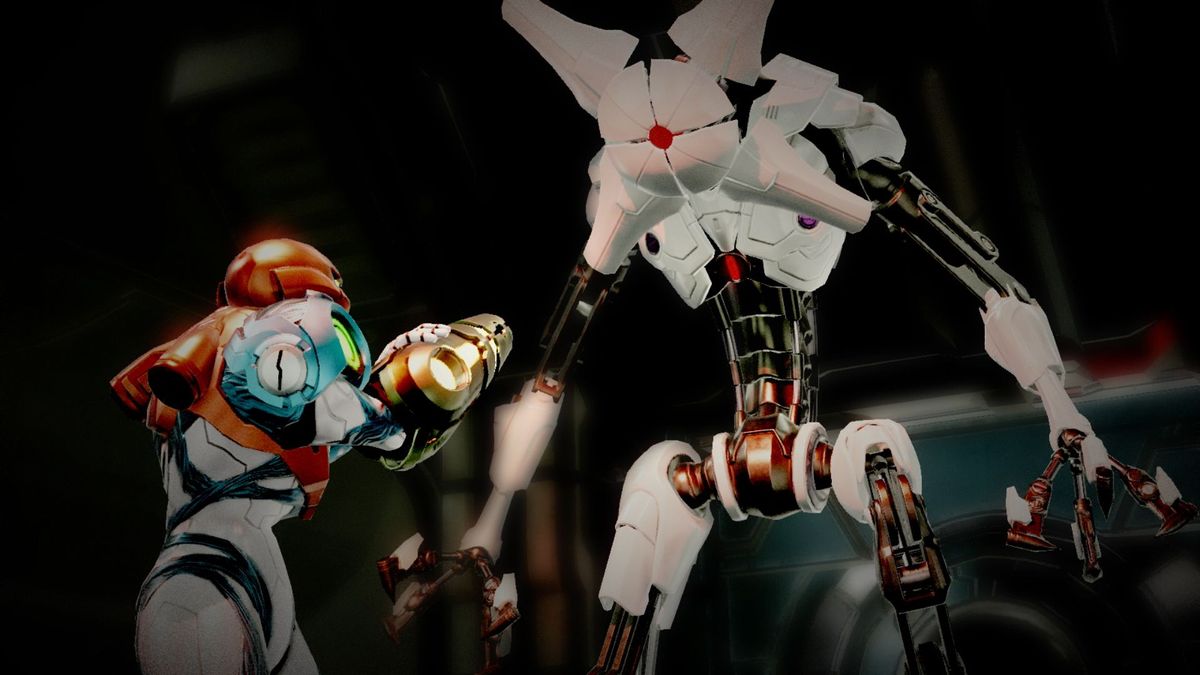
In an early scene in Metroid Fusion, Samus Aran takes an elevator to a lower level of a research station where she is investigating a recent explosion. One expects the camera to follow the elevator as it rides down or a fade-to-black, but it remains still for an extra beat. An explosion rocks the screen and everything goes white. From a plume of smoke, a figure that looks exactly like Samus in her regular power suit walks out of the smoke and turns to face the camera. In close-up now, we are fixed upon its eyes: no irises; no pupils; lifeless.
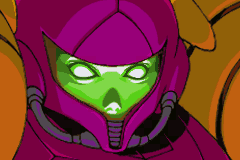
We later come to know this creature as the SA-X, a clone of Samus from the X-parasite infected remains of her previous, surgically-removed power suit. Because of her weakened state from the X infection, Samus is commanded by her ship's computer not to engage with this creature and to run away if she encounters it. Naturally, during the course of exploring the busted state of affairs at the station, you do encounter the SA-X, and those moments are some of the most thrilling and terrifying in the entire Metroid series.
As I reflected on the announcements from E3 this year and the news about Metroid Dread, I thought back to Metroid Fusion: how much tension and low-key horror they created in that game. If Super Metroid set the standard for Metroid-style exploration gameplay, Fusion set a new standard for storytelling and suspense.
I was pleased to see that this connection to Fusion was quite intentional. Interviews with Yoshio Sakamoto, producer of Metroid Dread and Nintendo's de facto Metroid franchise lead, reveal that Dread is indeed a continuation of Fusion's thrust into the realm of sci-fi thriller. This focus on thrills and horror in Metroid prompted a few thoughts and observations on the game and the series in general that I wanted to collect and share. I am excited for Metroid Dread, and I believe the future of this famed series is as intriguing as ever.
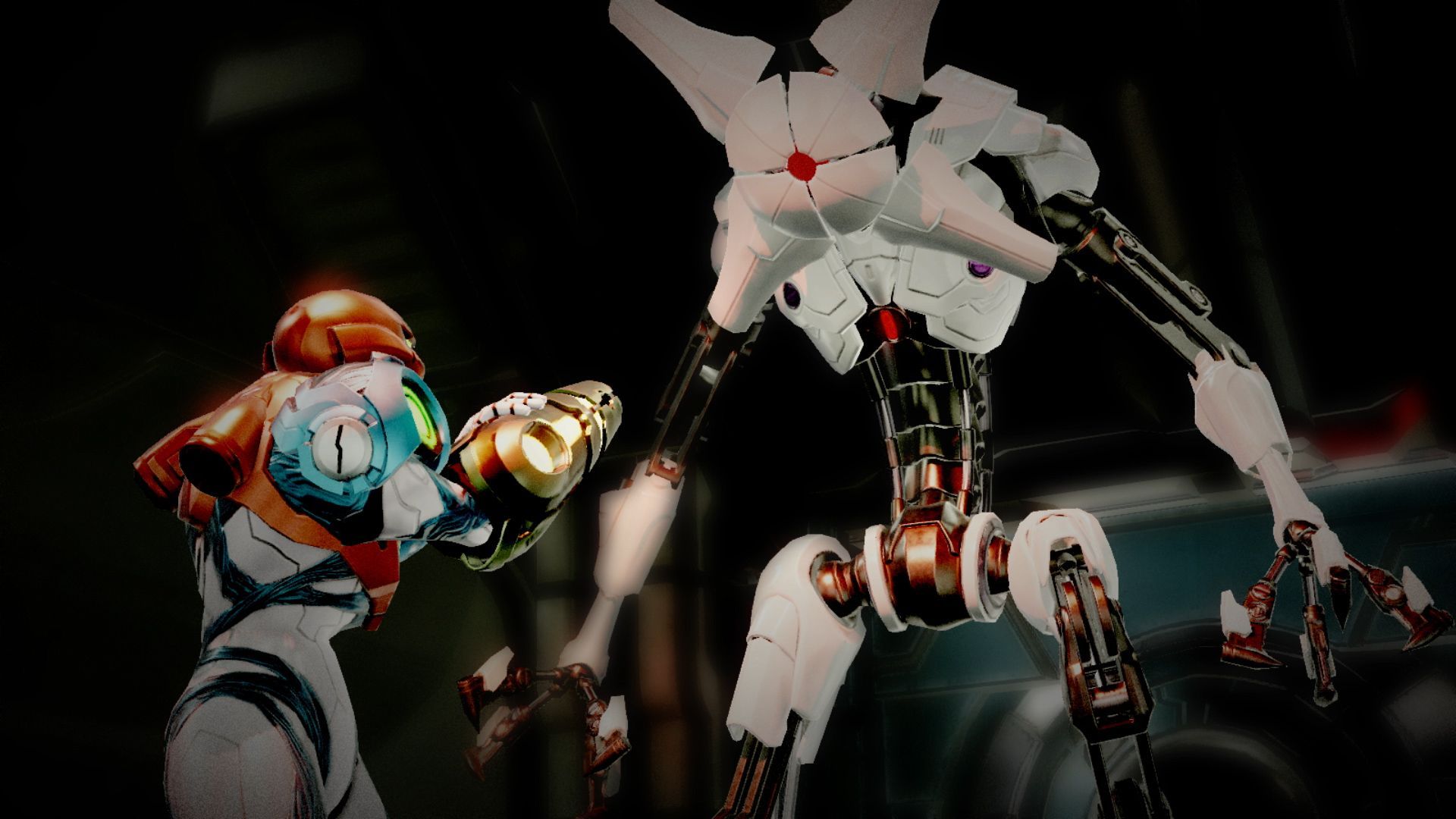
Sakamoto conducted a Q&A session after Dread's announcement wherein he elaborated on many aspects of the game's long development. From Polygon's feature, which covers Sakamoto's press interview thoroughly, he shared some interesting comments about the game's conception:
The whole entire concept hasn't changed over these 15 years. Really, it was that Samus, this powerful warrior, would be confronted with some overwhelming enemy that would chase her. That was the idea. … Maybe this sense of fear, as I talked about before, younger gamers who have not experienced the series before may look at that fear-based gameplay and want to give it a shot.
"Fear-based gameplay" is an intriguing notion that deserves exploring, but before delving into that, it's worth noting that Sakamoto announced that Dread will conclude the story arc that began with the first Metroid game. As Sakamoto sees it, Metroid Dread marks the end of something that he started in 1986 with the original Metroid for NES. Whether he considers Dread the culmination of his original vision or just a good place to switch gears, he doesn't say. But there is something he intends Dread to be the end of in Metroid as we know it so Nintendo can begin molding Metroid into something else.
In his piece covering Sakamoto's interview on Metroid Dread, Scott Stein at CNET quipped that the EMMI chasing Samus reminded him of Shadow Mario. I find this corollary apt given Sakamoto's insistence that "this isn't a game that is part of the horror genre" despite his "fear-based gameplay" assertion. In Shadow Mario levels, the player's actions as Mario are mimicked by Shadow Mario with a slight delay, forcing the player to keep moving to avoid losing a life to the mischievous trickster. Shadow Mario is light years away from turning Mario into full-fledged horror, but it does add a distinct element of fear to those levels. You have to think on your feet when you play a Shadow Mario level. The same is true of the SA-X chases in Fusion.
Owing from this SA-X inspiration, we can expect trial-and-error situations in Metroid Dread. The EMMIs roam only in areas marked by special pixelated doors, so the titular dread isn't pervasive. However, the previews make it clear that traversing the areas where the EMMIs patrol will be crucial to moving forward, and since an encounter with an EMMI almost guarantees death, I think we'll be seeing death scenes a lot come October when the game releases.
Balancing difficulty in games is always a delicate affair, but balancing the EMMI's deadliness with the classic exploration elements of Metroid had to be one of the trickier parts of making this game. Make the EMMIs too cunning, and the player doesn't progress and gets frustrated or gives up entirely. Make them too simple, and the game's central premise of dread and foreboding falls apart. In a game that, from its inception, involves platforming, exploring, and shooting, what happens when you introduce an invincible, deadly enemy?
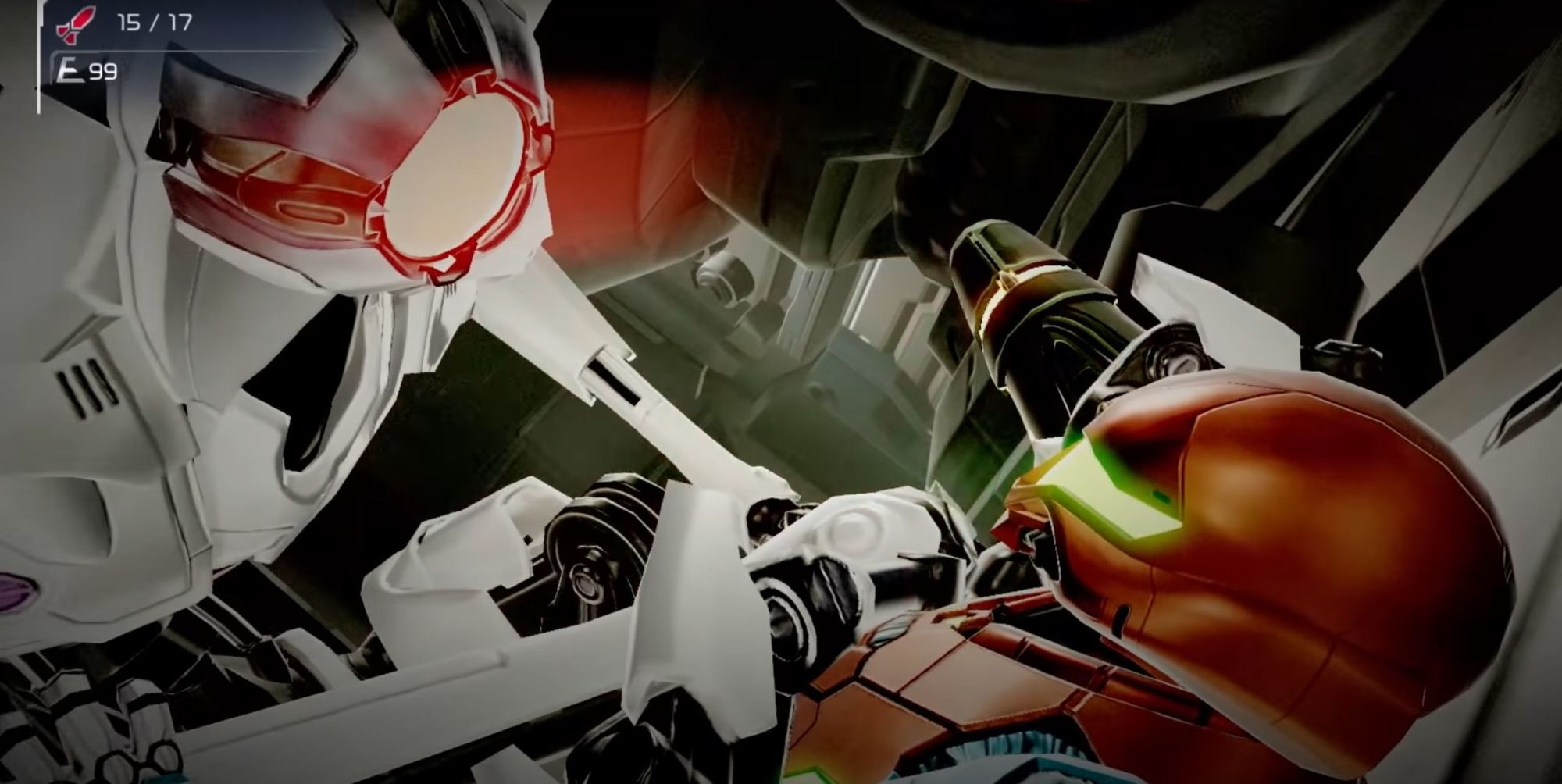
Achieving this balance goes some way, I believe, to decrypting Sakamoto's claims that the game's multiple false starts were due to hardware limitations in the mid- and late-2000s. A game based on killer robots hunting you must have visuals that grip you with the visceral nature of their ruthlessness—the fear of being chased has to be palpable—yet the hardware must have ample compute resources for the AI to respond to the player's movements intelligently. I can imagine it would be challenging to accomplish both on something like the DS, the first system they experimented with for Dread, which had a total 4 megabytes of RAM. By contrast, the Switch has 4 gigabytes of RAM, a thousand times more than the DS.
But a game isn't a result of its technical qualities. Nintendo gets this better than anyone. For them, it's about whether the platform affords the experience they want to create. In MercurySteam, Sakamoto found a partner that understands Metroid and whom he felt confident could accomplish the task of (finally) bringing Dread to life. In the Switch, he finally had a platform that could render his vision.
Brief aside: in case you missed the excellent Metroid: Samus Returns for 3DS from 2017, a remake of Game Boy's black-and-white Metroid II: The Return of Samus, look it up—that's MercurySteam's work. Also, check out the Metroid Dread development history video starting at the 2:45 mark for Sakamoto's praise of the studio. High marks from an industry veteran like him.
Although we may wish it hadn't taken 19 years for a completely new entry in the mainline 2D Metroid series, the announcement trailer shows that the technological improvements made between the game's conception and today provided us with a Metroid Dread that looks amazing.
From the trailer and the Treehouse demos (part one, part two), we can glean a few morsels about the gameplay. It's just a taste, but the fundamentals are there.
- In the trailer, we learn that EMMIs are impervious to Samus's standard weapons. Sakamoto's fascination with this enemy had to be the numerous gameplay opportunities this affords. When the answer to every question a game presents is not "just shoot it," that creates opportunities for something interesting to happen.
- Case and point, at the 1:35 mark of the trailer, Samus activates a power-up called the Phantom Cloak that she gains from a boss battle shown in part two of the Treehouse demo. Once active, Samus is invisible to the EMMI for as long as her Aeion gauge can power the ability. This adds a significant stealth element to the game and provides a strong incentive to increase your Aeion gauge to improve your cloak time.
- We also see yellow indicators around Samus's feet when an EMMI is tracking her footsteps. It's not clear whether the EMMI's ability to hear Samus will be leveraged for any useful game mechanics—maybe you could misdirect them by throwing an item across a room or remote-controlling something, or perhaps you could overload their hearing and stun them with a loud noise, like a car horn blowing into a hot microphone—but for now, it's clear that the EMMIs will hunt and kill you on sight, so stealth is crucial.
- The white EMMI in the trailer is unable to fit into the small passage Samus uses to slide out of its reach, but in part two of the Treehouse demo, the green EMMI can crawl through a similar passage with no problem. It's safe to assume, then, that not all EMMIs are alike. This means there will be a variety of EMMI encounters and behaviors that will demand players to study them and find their weaknesses. The key to success in Metroid Dread will lie in evading detection and learning each EMMI's quirks.
- On the topic of evasion, permit me a brief what-if tangent. Metroid: Zero Mission, the Game Boy Advance remake of the original Metroid, had a fantastic segment where Samus lost her power suit and players had to sneak her around in her blue Zero Suit, which was basically Samus's pajamas. What could be more thrilling than another sequence featuring Zero Suit Samus in a game filled with killer robots?
- In part one of the Treehouse demo, Samus gains an Omega Blaster capability from a Central Unit, empowering her to deal a death blow to an already damaged EMMI. It's not clear if your mission will involve handing every EMMI a similar fate, but given their central role in the game, I would guess the EMMI she destroys in the trailer is an exception and not the rule. But it's just a guess. It would be interesting if the game gave you fewer Omega blasters than there are EMMIs, offering you a choice of which ones to terminate and which ones you'll have to evade.
- Towards the end of the development history video, Sakamoto assures us that Metroid fans and new players alike will have plenty of traditional Metroid gameplay to enjoy aside from the EMMIs. One notable comment shortly before the six minute mark: "I think this game offers the player more freedom in exploration by offering more abilities to use." "More" in relation to what? This could be a hint at the scope and size of the game.
- If Dread is the end of the original Metroid story arc, what does Sakamoto and Nintendo have in mind for future entries?
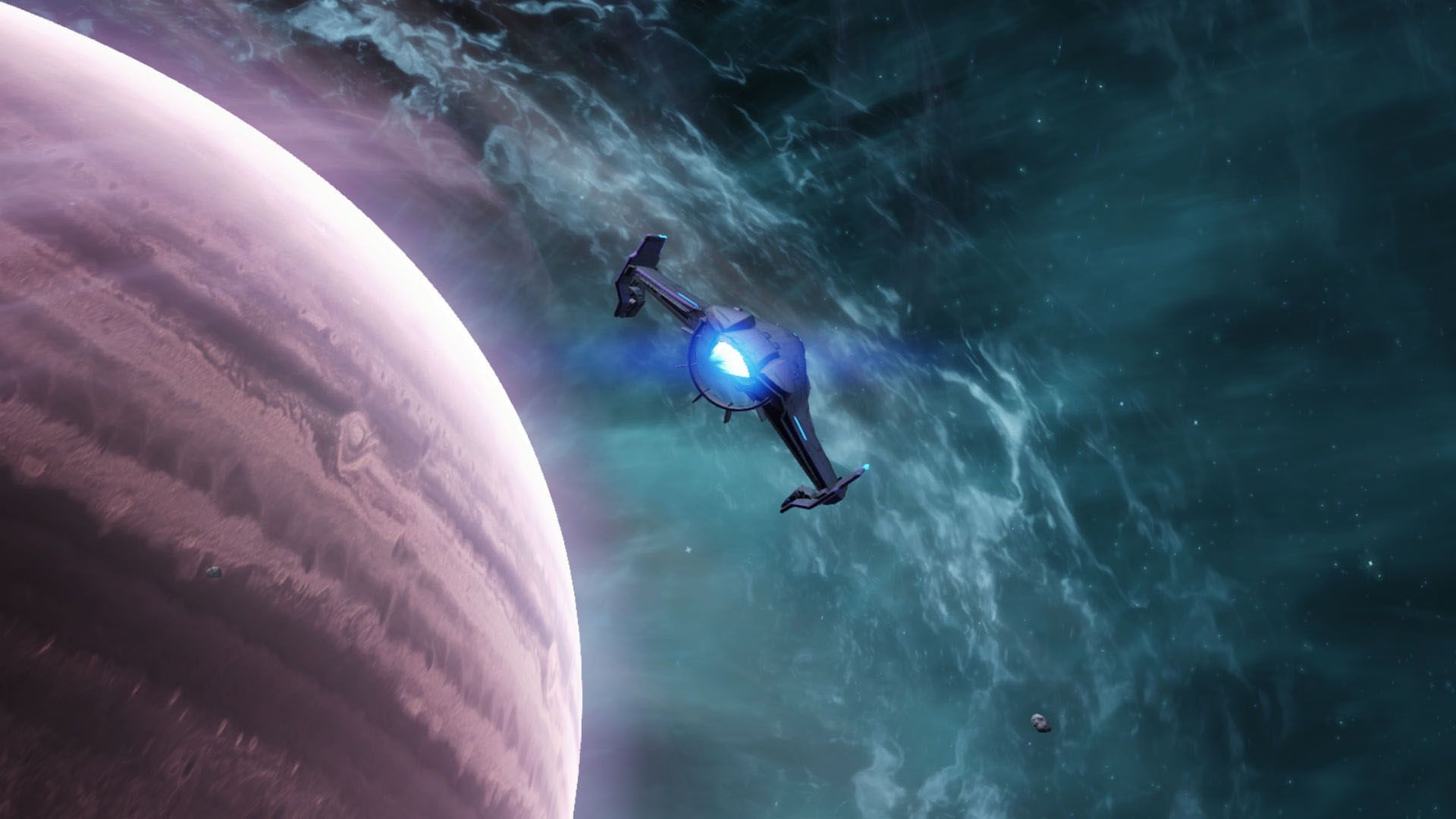
If we reduce Metroid to its simplest components and explain it like I'm five, you could explain it like this: Metroid is an exploration game where a woman in an Iron Man suit shoots monsters and gets access to new areas in a seamless, cohesive game world by finding little orbs held by statues of armadillos that upgrade her suit's abilities. Her mission is to defeat any and all malicious bio-hackers that want to use floating alien jellyfish to rule the universe.
Metroid Dread's contribution to this story arc might go: some of the robots people sent to study the jellyfish went bad, and Iron Man-lady's weapons don't put a scratch on them.
I'm simplifying the details here and joking a bit, but this is the gist of Metroid's story. And it's the story and the universe that I think Sakamoto is ready to expand.
I want to rewind briefly to an interview Sakamoto had with Kotaku in 2009 after the announcement of Metroid: Other M, a much-bemoaned title broadly considered the worst in the series. But Sakamoto said something there that he echoes in the press interview for Dread that demonstrates his long commitment to what he wants to bring to Metroid and Samus's story.
With Fusion, that game was very story-driven. In that game, I believe I was able to explain Samus as a character, as a person, not just somebody in armor. And I was not only explain [sic] Samus but the characters around her… with Super Metroid I showed, through her relationship with the baby Metroid, some of her maternal instincts. Between those two stories I feel I was able to explain Samus as a person. But because Metroid equals Samus, I'd like to develop her character further, as a soldier, as a human, also as a woman.
Our heroine, Samus Aran, has faced menaces big and small through the Metroid story. She has been into the depths of forsaken planets that, seemingly, no one in the Galactic Federation has the courage to do. She's a bounty hunter, so she has an edge. She wields a powerful suit of armor made by an ancient alien race called the Chozo that makes her nearly invincible. She has destroyed countless Metroids and was befriended by one that saved her life twice: once during a battle (Super Metroid's final boss), and once through a vaccine made from the Metroid's DNA while fighting a disfiguring infection by the X parasite (Metroid Fusion's prologue). In Metroid Dread, she finally meets her match with the EMMIs. But, I believe we can safely assume that she'll beat them, too. Samus Aran is a legend.
So, where did she come from? How did she become a bounty hunter? Who are the Chozo, and why is their tech that interfaces with Samus's power suit buried away in planets across the galaxy? Are there others in the universe like Samus, with power suits and Chozo tech? Who is that alien at the 1:33 mark in the trailer? How big is Samus's story?
One more quote from Sakamoto's Dread interview:
The Metroid story until this point has dealt with Samus’ strange fate that’s been intertwined around this being called the Metroid. And until now, that has been the focus of the series. But what this game represents is a bit of a pause, or kind of a new start to something else. …
Nobody wants the Metroid series to end, and we know that. We ourselves don’t want that either. But we just want people to know that there is some kind of new episode that is waiting in the works, and we want you to look forward with what we do with that next — but there are no specifics now.
So, how big is Samus's story? My take: bigger than Metroid.